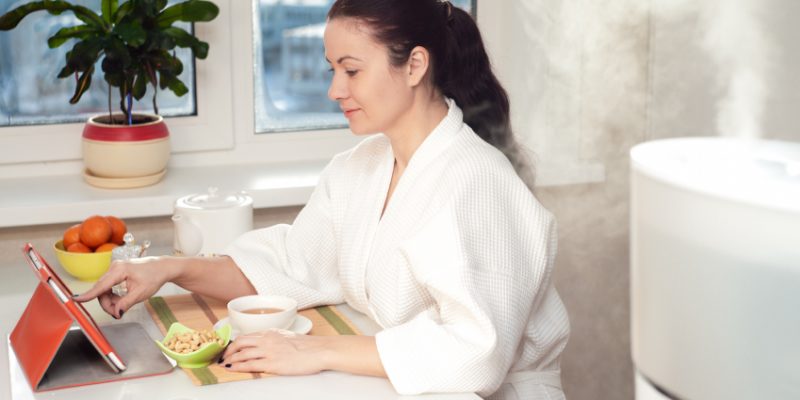Using a humidifier in your home or workplace can offer many benefits, such as clearer skin, moisturizing properties, help clear sinuses, preventing dry throat, and help to prevent the spread of diseases and viruses. With all of these benefits, you have to think about the risk factors as well. Do they put your body at risk? What about your home?
To learn more about humidifiers and the risks associated with their use, keep reading.
Are Humidifiers Safe?
There isn’t an easy answer to this question, as there are so many different types of humidifiers on the market these days, it can be hard to say which ones are safe and which ones aren’t. Generally, cool-mist humidifiers or any humidifiers that emit vapor are safe to use in any situation. Cool-mist humidifiers are safe for dogs and children and so you can still feed your squirrels, so they’re a great option if you have either in your home.
However, humidifiers and vaporizers that emit steam or hot vapor can be dangerous, as the steam can cause burns if you aren’t careful. For this reason, these types of humidifiers shouldn’t be used in homes with young children or pets, as they won’t know how to act safely around these machines.
Health Risks
Humidifiers also pose some risks for adults of any age. Optimum humidity levels sit between 30% and 60%, when the humidity level is too low, you’ll want to start your humidifier. However, if you have a humidifier that doesn’t have a hygrometer and the ability to stop humidifying when reaching a certain level, you run the risk of over-humidifying your home.
Over-humidification can cause health problems, like trouble breathing. If you have asthma or another lung condition, it may be even more difficult for you to breathe properly. That isn’t to say that you shouldn’t get a humidifier, but you should be careful when using it to prevent it from over-humidifying your home.
What is the “White Dust” That They Emit?
Many people complain about “white dust” that collects on nearby furniture after using a humidifier. Some state that this dust is harmless, while others state that it may cause illness in some. Bacteria and mold that grows inside your humidifier can settle on furniture after being dispersed into the air. This is why it’s so important to make sure that your humidifier is clean at all times.
You’ll also need to make sure that your humidifier is being cleaned with the right materials, as cleaning your humidifier with toxic products or heavy products can cause those particles to be spread into your air as well, especially if the device isn’t properly rinsed out.
For best humidifier safety, make sure you’re cleaning your humidifier regularly and rinsing it out so it’s free of chemicals before you use it.
Are They Worth the Risk?
It’s up to you whether or not humidifiers are worth the risk. When you use your humidifier properly, the risk factors decrease greatly. If you choose the correct humidifier for your home, you won’t have to deal with the risk of someone getting injured.
Because the benefits of owning a humidifier are so great, we believe that the benefits outweigh the risks, especially since the risks can be lowered drastically with good care and attention to your humidifier.
How to Choose a Safe Humidifier for Your Home
There are a few key decisions you need to make when choosing your humidifier. First and foremost, are you looking for something to use in a home with pets? If the answer is yes, you’ll want a cool-mist or non-vaporizing humidifier.
If you don’t want to worry about over-humidifying your home, you’ll want to get a humidifier with auto-shutoff or a built-in hygrometer. And finally, if you’re lazy when it comes to cleaning, you can opt for easy-to-clean models as well!
There’s a perfect humidifier out there for everyone, so find yours to start experiencing the benefits!










Comments